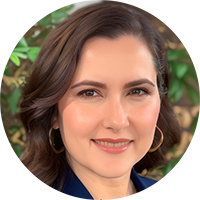Optimizing Sustainability: What is a Circular Economy?
Imagine a world with zero waste. As far-fetched as that sounds, humans are inching towards that goal more and more every day. We’re still far from a zero-waste environment. But a circular economic model could significantly contribute to a healthier planet and a more sustainable Earth. What is a circular economy? Further, how can a business implement a circular economy even on more minor scales?
What is Waste?
A product or substance no longer suitable for its intended use is considered waste. That includes non-hazardous/solid and hazardous waste:
- Non-hazardous/solid waste – All waste not labeled as hazardous is considered non-hazardous or solid waste, including paper, plastic, glass, metal, and beverage cans. Solid waste is not dangerous, but if it is not collected and processed, it can have detrimental effects on the environment and human health.
- Hazardous waste – Waste that could harm the environment or human health is called hazardous waste and requires special, separate handling. Chemical and physical features determine the precise collection and recycling method. It includes sludges from air and water pollution control units and many other discarded materials. (The INTOSAI Working Group on Environmental Audit, 2019)
It’s easy to think of dirty landfills and polluted oceans when you hear the word waste. In reality, waste goes far beyond what the eye can see.
What is a Circular Economy?
A circular economy is the reuse of waste. Instead of throwing products and materials away, the circular economic model finds ways to recycle them. This approach doesn’t need to begin at the point of waste. Incorporating a circular economic model in a product’s design and the planning process can create less impact on the environment.
Linear Economy vs Circular Economy
The biological life cycle is circular. We are born, need natural resources like the sun and water to live, then die and decompose back to earth. Humans have adopted a linear approach, however.
What do you do with our earlier model when you buy a new cell phone? Sometimes you keep it in a drawer. Other times you sell it. Throwing it away is a linear economic model, whereas finding a way to recycle it (selling, buyback, trade-in program, etc.) contributes to a circular economy model.
A circular approach to waste can help optimize sustainability.
Real Examples of a Circular Economy
Many organizations are incorporating a circular economic model or providing frameworks and roadmaps to the practice. Specifically, the three most important factors to consider when assessing an investment’s sustainability and ethical impact are its environmental, social, and governance (ESG) impacts. ESG criteria are being used more frequently by socially conscious investors to evaluate possible investments.
The environmental, social, and governance investment method is founded on the idea that these factors might affect a company’s performance and market returns. With that in mind, here are some examples:
Circular Cars Initiative (CCI)
A “circular car” is an automobile with maximum material efficiency.
In contrast to today’s zero-emission automobiles, this theoretical vehicle would produce zero material waste and zero pollution during manufacture, use, and disposal. Though cars may never be entirely “circular,” the automotive industry can significantly raise the degree of circularity. That could positively affect the economy, society, and the environment.
The CCI is a significant improvement to the automotive industry because:
- Circular cars will be a key building block for a low-carbon mobility system and are critical to achieving a 1.5°C scenario.
- It can serve growing mobility demand while simultaneously reducing resource consumption to a sustainable level.
According to the World Economic Forum, “Simply improving vehicle use could yield dramatic reductions in carbon emissions per passenger kilometer. Combine this with optimized vehicle lifetime, increased materials recycling, and clean energy, and automotive emissions could plummet in the years and decades to come.” (Holst et al., 2020)
Circular Electronics Initiative
The European Commission unveiled its New Circular Economy Action Plan in March 2020 as part of the European Green Deal, and it included a circular electronics effort that would encourage longer product lifetimes and include, among other things, the following actions:
- Implementation of the “right to repair,” including a right to update out-of-date software
- Introduction of a standard charger
- Improvement of the collection and treatment of waste electrical and electronic equipment
- Review of EU regulations on hazard restrictions
The European Parliament supported the Circular Electronics Initiative, which should address the shortcomings in durability, circular design, presence of hazardous and harmful substances, recycled content, reparability, access to spare parts, upgradability, e-waste prevention, collection, reuse and recycling. (European Parliament, 2022)
These two examples prove that the circular economy isn’t just being used in business models, but governmental organizations are taking action too.
Achieve Sustainability Through a Circular Economy Model in your Business
Creating a circular economy action plan requires strategic planning and measurable results. One way to begin is through a life cycle assessment (LCA).
A life cycle assessment helps you assess how much waste you’re generating and where precisely the waste is coming from. It allows you to incorporate the collected data into a waste-reduction plan. After the LCA, you can begin planning for a more sustainable business. Like many processes, life cycle assessments come with limitations, primarily because they are mainly used to quantify the impacts of products and processes.
Become Certified in the Circular Economy with MIT Professional Education
The future of sustainability lies in the circular economic model. MIT Professional Education’s Circular Economy: Transition for Future Sustainability course presents an encompassing, quantitative, and qualitative portrayal of sustainable solutions. The course highlights reducing, reusing, and regenerating materials, leading to economic growth and sustainable resilience. You will also:
- Understand the fundamental definition of a circular economy
- Define the different ways of reaching a circular economy through technology and material science and how to quantify circularity
- Develop strategies for a more equitable distribution of costs and benefits.
- Determine institutional and economic structures and policies that enable the possibility of a circular economy policy
- Dissect successful and unsuccessful case studies in sustainability and circular economies
- Further apply the importance of recycling plastics and electronics to tackle environmental concerns and e-waste
- Gain an understanding of how material transport plays an influential role in sustainability
- Study the circular economy lifestyle
- Apply the best energy alternatives for circular economies and uncover the importance of co-mingled waste
Led by industry professionals Dr. Afreen Siddiqi and MIT Professors John E. Fernández and Olivier de Weck, this course can help you accelerate your career and lead sustainable changes in your business.
Find out more about other courses at MIT Professional Education and boost your career.
Resources
European Parliament. (2022, December). Circular Electronics Initiative: Legislative Train Schedule. European Parliament. Retrieved December 22, 2022, from https://www.europarl.europa.eu/legislative-train/theme-a-european-green-deal/file-circular-electronics
Holst, A., Lacy, P., Reers, J., Schmidt, A., Tillemann, L., & Wolff, C. (2020, December). Raising Ambitions: A new roadmap for the automotive circular economy. Circular Cars Initiative Business Models Cluster. Retrieved December 22, 2022, from https://www3.weforum.org/docs/WEF_Raising_Ambitions_2020.pdf
The INTOSAI Working Group on Environmental Audit. (2019, September). Definition and classification of waste. Sisu@UT. Retrieved December 22, 2022, from https://sisu.ut.ee/waste/book/11-definition-and-classification-waste#:~:text=Waste%20is%20a%20product%20or,a%20long%20time%20to%20decompose.

Clara Piloto
Director of Global Programs, Director of Digital Plus Programs
MIT Professional Education
Massachusetts Institute of Technology
professional.mit.edu
